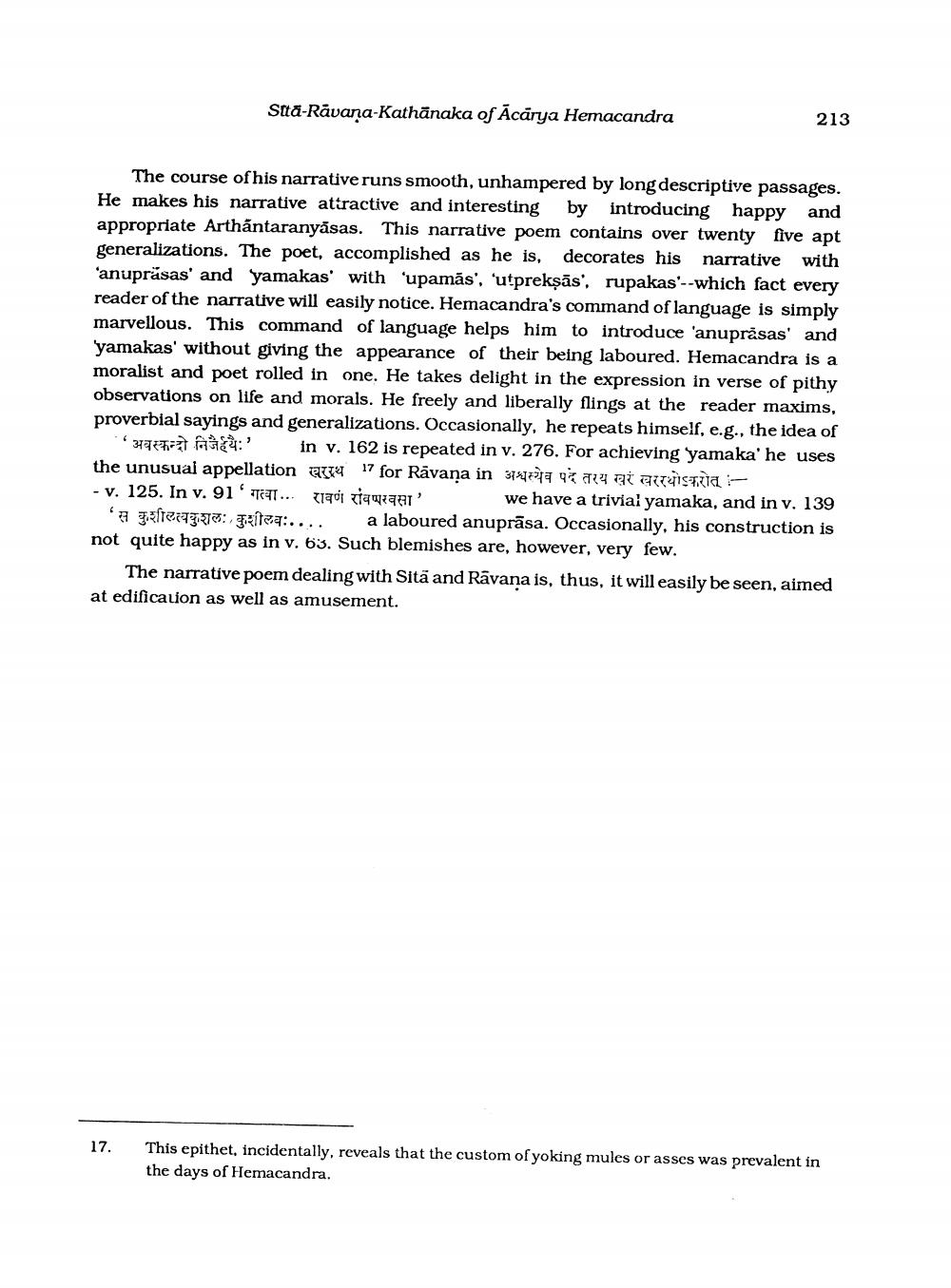________________
Sta-Ravana-Kathānaka of Acārya Hemacandra
213
The course of his narrative runs smooth, unhampered by long descriptive passages. He makes his narrative attractive and interesting by introducing by introducing happy and appropriate Arthantaranyāsas. This narrative poem contains over twenty five apt generalizations. The poet, accomplished as he is, decorates his narrative with 'anupräsas' and yamakas' with 'upamas', 'utpreksäs', rupakas"--which fact every reader of the narrative will easily notice. Hemacandra's command of language is simply marvellous. This command of language helps him to introduce 'anuprāsas' and 'yamakas' without giving the appearance of their being laboured. Hemacandra is a moralist and poet rolled in one. He takes delight in the expression in verse of pithy observations on life and morals. He freely and liberally flings at the reader maxims, proverbial sayings and generalizations. Occasionally, he repeats himself, e.g., the idea of अवको निः in v. 162 is repeated in v. 276. For achieving yamaka' he uses the unusual appellation पर 17 for Rāvana in अधस्येन पदे तस्य खरं सरोक :- v. 125. In v. 91' गत्वा रावणं विप्परवसा we have a trivial yamaka, and in v. 139 ' स कुशीलवकुशलः, कुशीलवः.... a laboured anuprāsa. Occasionally, his construction is not quite happy as in v. 63. Such blemishes are, however, very few.
17.
The narrative poem dealing with Sitä and Ravana is, thus, it will easily be seen, aimed at edification as well as amusement.
This epithet, incidentally, reveals that the custom of yoking mules or asses was prevalent in the days of Hemacandra.




